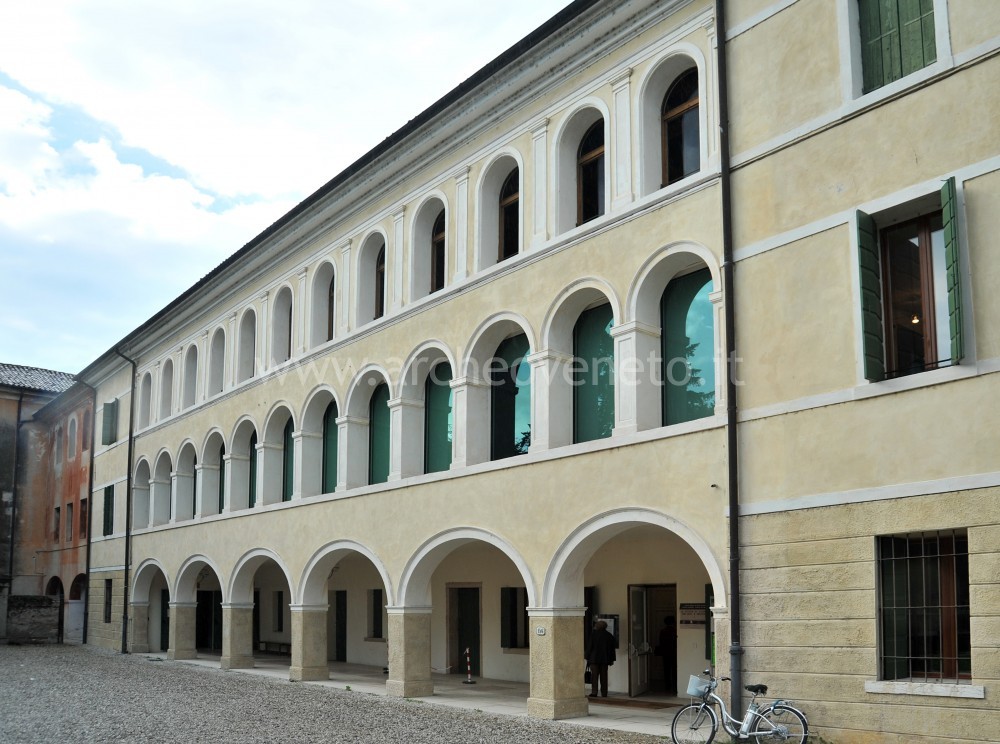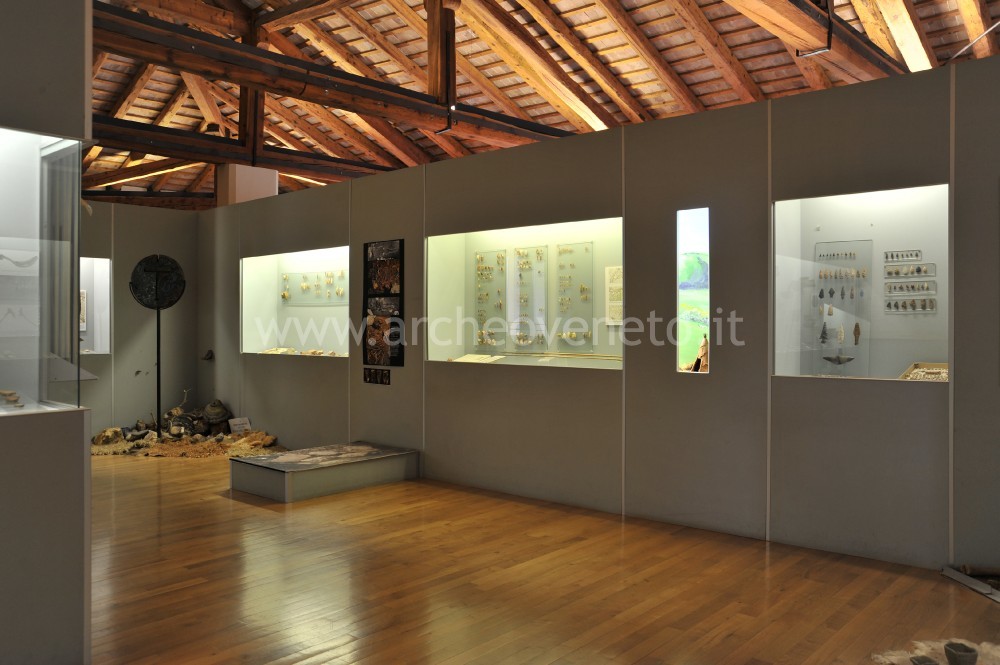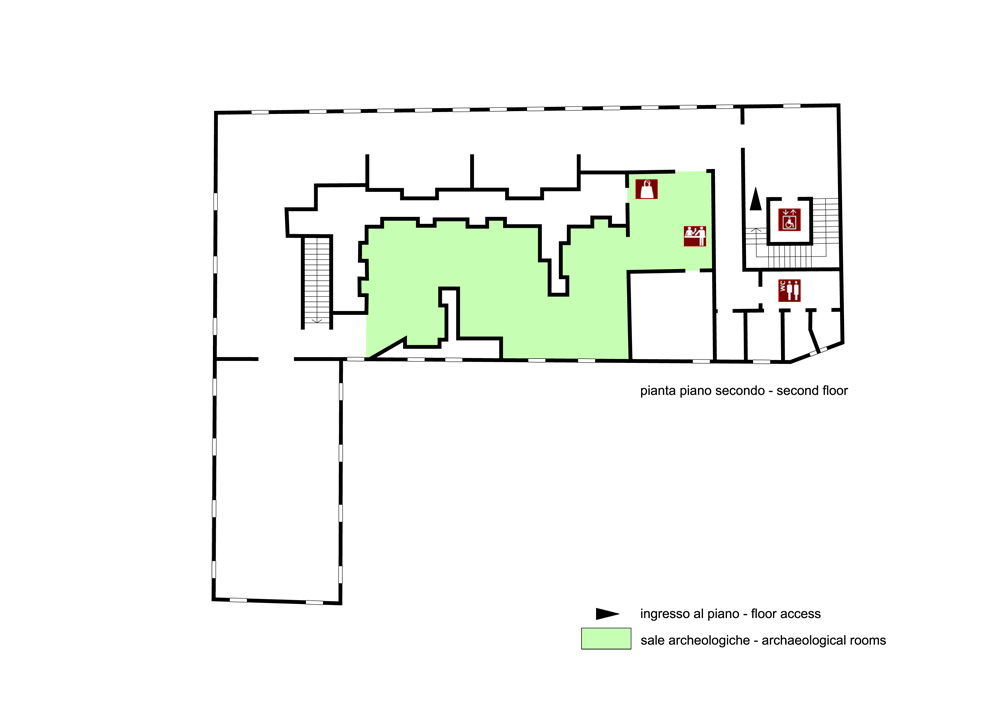|
|
File
Civic Museum “Earth and Man” – Crocetta del Montello
|
Via Erizzo 133 (Villa Ancillotto) – 31035 Crocetta del Montello (TV)
– Fax 0423 86232 |
  |
|
Summary

The Civic Museum of Crocetta del Montello, which is located in the wonderful Villa Ancillotto, proposes a didactic approach to the evolution of life on the earth and to pre-protohistory. The museum is divided into two main parts: the paleontology section (fossil remains) and the archaeological one (from Upper Paleolithic to the Metal Age). The museum is characterized by an important didactic approach, also thanks to the manual activities that are carried out.
Collection history
The Museum of Crocetta del Montello was established and opened to the public in 1978 thanks to the work carried out by the local research centre, a group made up of local citizens interested in paleontology and prehistory. Thanks to the close relation between the museum and the land, the members of this association managed to provide the public with an important tool to understand the local history, also raising awareness on the topics related to the safeguard of the cultural heritage. In this way they developed the idea of a “global eco-museum for sustainability”. Over the years the museum was further enlarged thanks to the important donations made by Augusto Krüll and the Ligabue study and research centre.
|

 This section of the rooms shows the technological progress made thanks to the human discoveries, presenting the tools invented and their function throughout the centuries. This section of the rooms shows the technological progress made thanks to the human discoveries, presenting the tools invented and their function throughout the centuries.
The first display case is devoted to the lithic reduction techniques adopted during Paleolithic; for each technique (direct percussion, direct percussion on an anvil and indirect percussion) there is an explanatory picture and an example of lithic artefact. Here it is possible to see also some materials suitable for lithic reduction. The second display case contains lithic tools, from the most ancient choppers, to the most recent ones, obtained using flakes and blades; they include denticulate tools, scrapers, points, foliate points, geometric forms, backed knives, backed blades, backed points, punches, truncated flakes, scratchers and burins. Going towards the left, it is possible to see the third and fourth display cases, which contain the tools of the Levalloisian stone-flaking technique from the Middle Paleolithic (120,000-36,000 years ago) discovered on the Montello hill and in the area between the Quartier del Piave plain and Monte Grappa. The first one presents Mousterian artefacts produced with the Levallois technique (lateral and transverse scrapers, points) made of flint from Monte Grappa or Monte Cesèn, whereas the second one displays lithic tools (transverse and lateral-transverse scrapers, denticulate tools of the “La Quinà” industry type and flakes) found in Capo di Monte. Between the display cases it is possible to see the reconstruction of a Mousterian hut found in Ukraine.
The exhibition goes on with the fifth display case, which contains the largest amount of lithic tools, which are also more complex and which date back to the Upper Paleolithic (36,000-10,000 years ago): burins, scrapers, truncated flakes, points, backed blades, retouched blades, scraper blades and others. The same display case contains also two copies of the statuettes of the Venus of Willendorf and the Venus of Dolni Vestonice, as well as a graffito depicting a mouflon found in northern Africa, which can be referred to the birth of the prehistoric age. Then there is the picture of the burial of a young prince, which was found in the Arene Candide cave and which can be traced back to the Upper Paleolithic.
The following display case contains extremely small flints of triangular and trapezoidal shape, commonly known as microliths, which were influenced by the technical innovations in the lithic reduction techniques that characterized the Mesolithic Age (10,000-5,000 years ago). The tools (scrapers, burins, truncated flakes, microburins, arrowheads or harpoons for fishing) come from the sites of Capo di Monte (Montebelluna), Santa Mama (Crocetta del Montello) and Sopra Piana (Vidor).
The last display case, before moving to Neolithic, contains arrow- and spearheads from different parts of the world (Egypt, Peru, Bolivia, Morocco, Algeria, Australia).
The second part of this section is devoted to Neolithic (4,500-2,000 B.C.), an important time in human history, as it marked the transition from an economy based on the search for food (hunting and collecting) to the production of consumption goods (farming and stock-breeding) thus leading to inevitable changes in the natural environment and in the tools necessary for survival. The eighth display case contains lithic tools used during Neolithic (foliate and polished stone tools) which include a sickle of the Fiavè type, a polished axe from Falzè di Piave, a small idol, burins, scratchers, truncated flakes, foliate scrapers, foliate points and bifaces, pedunculate points, scrapers, querns and hoes.
Another important discovery accomplished during Neolithic was earthenware, the stylistic and formal evolution of which is well summarized in the ninth display case, which contains different examples of vases arranged in a chronological order: impressed pottery (early Neolithic), pots from Fiorano (middle Neolithic), square mouth vases (middle and recent Neolithic) from Montello and Fimon, pots from the Bocca Lorenza cave (final Neolithic) and bell-shaped vases from Remedello (final Neolithic). Next to these specimens, there is a remarkable amount of ceramic fragments (rims, decorated walls, handles and others), which can be traced back to the Bronze Age.
Moving to the last part of this section, it is possible to see a display case that contains part of the collection belonged to Augusto Krüll, which consists of numerous kinds of European, African and American lithic artefacts produced during the agricultural revolution (which took place at different times in the different continents).
The last part of the exhibition is devoted to the discovery of metallurgy and the beginning of the Bronze age. The first display case contains a huge amount of metal tools, which include different kinds of axes (from Col Fosco, Crocetta del Montello, Ciano del Montello and Susegana), different kinds of swords of the Recent Bronze age (of the “Castions” type from Strada Marano Lagunare, of the “Sauerbrunn Bolu” type from Susegana and of the “Sombor-Smolenice” type from Susegana) and of the Iron Age (of the “Tarquinia” type), ingots and slag from welding found on the shore of the Piave river, as well as different kinds of objects (a situla handle, a ring, pins, a strainer fragment, an axe-shaped pendant and a fibula). The opposite display case contains a few metal objects from the Krüll collection, coming from Luristan (Iran). They include swords, daggers, battle and work axes, points, jugs and bowls, small bells and a wonderful Assyrian helmet. Then there are some cases without captions arranged in a temporary layout, which are also related to the Krüll collection: a display case contains axes and spearheads of the Late roman and Lombard age; one displays numerous examples of (cuneiform and hieroglyphic) inscriptions; two display cases contain vases from Apulia and Magna Graecia and finally there is the exhibition of stone material from the Roman age, which is placed on the landing of Villa Lancillotto.
|

Admission: Negli orari di apertura
Ticket: Si
Price: Full fare: 3,50 €; Children (above 6 years) 2,00 €.
 School access School access
 Disabled access Disabled access
Opening Days
| Tipology |
When |
Specs |
| Summer/Winter |
Tuesday |
09.00 – 12.30 e 15.00 – 18.00 |
| Summer/Winter |
Wednesday |
09.00 – 12.30 e 15.00 – 18.00 |
| Summer/Winter |
Thursday |
09.00 – 12.30 e 15.00 – 18.00 |
| Summer/Winter |
Friday |
09.00 – 12.30 e 15.00 – 18.00 |
| Summer/Winter |
Sunday |
09.00 – 12.30 e 15.00 – 18.00 |
Recommended tour time (minutes): 30
 Toilet Toilet
 Parking Parking
 Bookshop Bookshop
 Rest points Rest points
 Guide a stampa Guide a stampa
Brochure
Italian
 Information boards Information boards
Italian
 Captions under exhibits Captions under exhibits
Italian
 Guided Tours Guided Tours
 Educational activities Educational activities
 Educational workshops Educational workshops
 Library and documentation centre Library and documentation centre
 Other activities Other activities
| Paolillo A. 2004, Guida del Museo di Crocetta del Montello “La Terra e l’Uomo”, Caerano di San Marco , pp. pp. 25-53. |
|



 School access
School access Disabled access
Disabled access Guide a stampa
Guide a stampa Information boards
Information boards Captions under exhibits
Captions under exhibits Guided Tours
Guided Tours Educational activities
Educational activities Educational workshops
Educational workshops Library and documentation centre
Library and documentation centre Other activities
Other activities





















